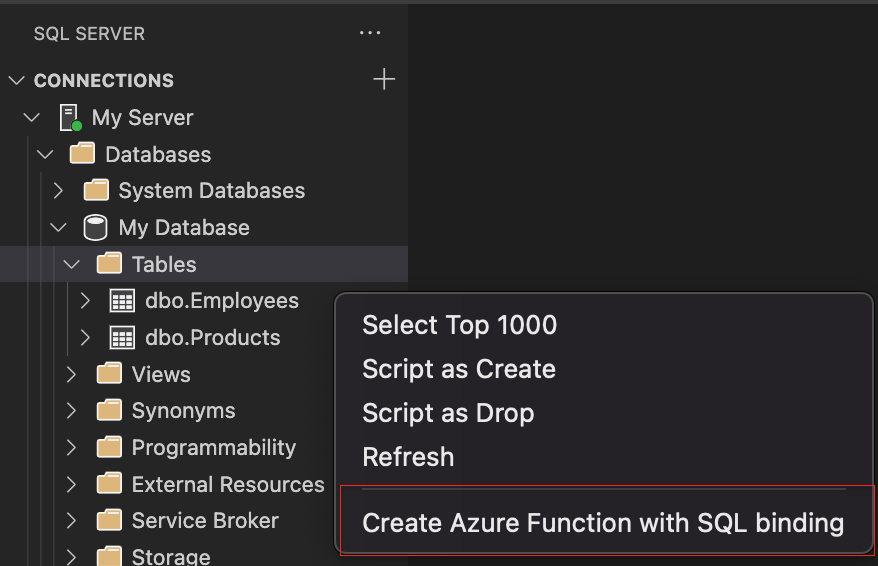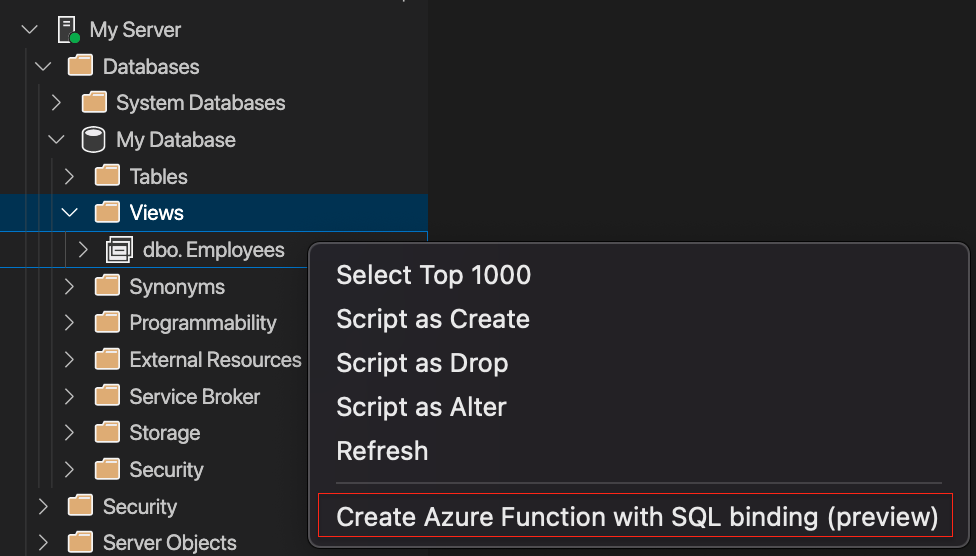Create Azure Functions with the SQL bindings extension through the Object Explorer
Applies to:
SQL Server
Azure SQL Database
Azure SQL Managed Instance
Azure Synapse Analytics
Overview
Microsoft SQL Bindings for VS Code enable users to develop Azure Functions with Azure SQL bindings, see further documentation here. Install the VS Code extension here.
From the Object Explorer
To create an Azure Function from a specific Table or View in object explorer (OE), right-click on a table or view from a connected server in SQL Server object explorer and select Create Azure Function with SQL Binding.
Table OE Command:

View OE Command:

If you haven't yet created the Azure Function project, a VS Code prompt will appear to aid in creating a new Azure Function project.

The extension will then ask you to select the folder where you want to create the Azure Function.

If you're creating an Azure Function with SQL binding from a table, the extension will prompt you to select the binding type to use, either an Input (Retrieves data from a database) or Output (Save data to a database) binding.
Note
Azure Function with SQL Binding from a View is only supported for Input bindings.

The extension will then prompt you to enter the function name to be used for the Azure Function.

If you already have connection strings stored in the local.settings.json, then the extension will prompt you to select the connection string to use for the Azure Function or create a new connection string.

If you select Create new local app setting, then the extension will prompt you to enter the connection string name and value.

If you're creating the Azure Function with SQL Binding to an existing Azure Function project, then the extension will prompt you whether you would like to include the password for the connection string in the local.settings.json file.

If Yes, then the password will be saved to the local.settings.json file. If No then the extension will warn you that the password won't be saved to the local.settings.json file (shown below), and you'll need to manually add the password later to the local.settings.json file.

The extension will then prompt you to provide the namespace for the Azure Function.

If you're creating a brand new Azure Function project with SQL binding, then the extension will prompt whether you would like to include the password for the connection string in the local.settings.json file.
A progress notification will appear to indicate that the Azure Function has completed.

Once the Azure Function is created, the extension will generate the code either for an Input or Output binding shown here.
Next steps
Opinia
Dostępne już wkrótce: W 2024 r. będziemy stopniowo wycofywać zgłoszenia z serwisu GitHub jako mechanizm przesyłania opinii na temat zawartości i zastępować go nowym systemem opinii. Aby uzyskać więcej informacji, sprawdź: https://aka.ms/ContentUserFeedback.
Prześlij i wyświetl opinię dla